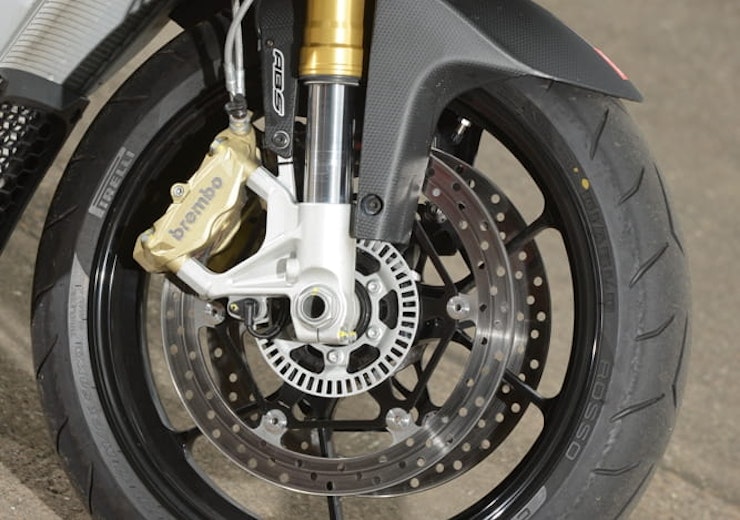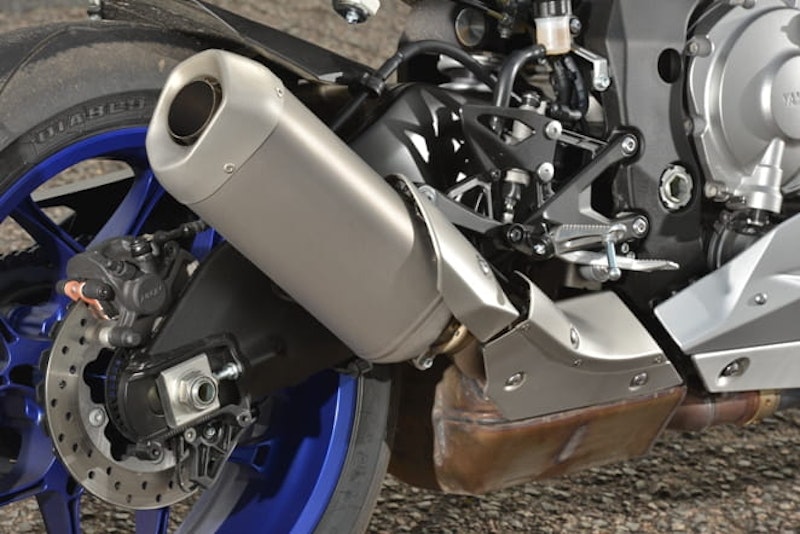Author: Bike Social News Reporter Posted: 17 Aug 2015
Why it’s going to be a bumper year for new bikes
Interpreting the rules for 2016/17
The last few years have seen a steady stream of new models from the world’s main bike firms but over the next 12 months or so we’re expecting to see a huge glut of new and reworked machines.
Why? A combination of economic and legislative changes are combining to create ‘perfect storm’ conditions that will simultaneously cut down a wide swathe of older models and encourage their replacement with new bikes developed to meet developments in rules and tastes.
Let’s start with the easiest element of the situation; legislation. Much was made of the European regulations on the ‘approval and market surveillance of two- or three-wheeled vehicles and quadricycles’ over the painfully drawn-out process of their creation – proposals date back to 2010 and the final text was adopted in 2012 – but little mention has been made since, despite the fact they’ll significantly change many of the bikes we can currently buy.
While the actual documents make for difficult reading, filled with provisos and references to other pieces of legislation, the vast majority of the changes they introduce come into effect in two stages. The rules will first be applied to newly-developed bikes from 1 January 2016, the official date at which the regulations will come into force, while existing models will generally have until precisely one year later – 1 January 2017 – before they have to comply.
The key elements of the new rules are:
Euro 4 emissions limits
This is one of the changes that could sound the death knell for older bikes come the end of 2016, as Euro 4 rules are nearly twice as strict as the Euro 3 regulations that have been in place since 2006. The rules vary depending on performance, but for most full-size bikes carbon monoxide emissions, currently limited to 2.0g/km (grams per kilometre), drop to a maximum of 1.14g/km, while hydrocarbon limits drop from 0.3g/km to 0.17g/km and NOx falls from 0.15g/km to 0.09g/km. What’s more, the Euro 4 also introduces a durability test, so manufacturers need to prove that their engines can still meet the limits after 20,000km of use.
There’s also an ‘evaporative’ element of the emission test, which measures vapours that come from the evaporation of fuel over a period of time when the engine isn’t running. To pass, some bikes might need changes to their fuel caps, pipes or even completely new fuel tanks.
ABS
This is one most people have heard of; from 1/1/2016 all new-model bikes over 125cc will need ABS, while smaller bikes must have either ABS or a combined brake system. As with the rest of the rules, there’s a year of grace for carry-over models, but come the start of 2017 everything must be in-line with the regulations to be allowed to be sold.
OBD 1 (On Board Diagnostics)
The OBD 1 system is a standardised on-board diagnostic protocol that monitors any electronic element of the emissions control systems. This basically means that anyone with the right equipment – and it must be freely available, not just to authorised dealers – can plug computers into the system to check that things like the bike’s fuel injection is working properly. OBD 1 is still fairly rudimentary, though - from 2020, when Euro 5 emissions laws come into force, bikes will get the same sort of OBD II kit that’s already fitted to cars, which is far more advanced.
What does all that mean?
While there were plenty of scare stories back in 2012 about how ABS would ramp up the cost of bikes or that OBD would force people back to main dealers for every service, the reality is that the changes won’t have a massive impact on riders.
They will impact manufacturers though, since there are plenty of bikes that need significant changes to meet the new rules. That means investment in modifications to their designs, or withdrawing them from sale altogether and replacing them with something else.
A good example is Triumph’s Bonneville. Not designed with Euro 4 or ABS in mind, adopting both would mean a major reworking of the existing model, which in turn represents a huge investment. And with Euro 5 emissions rules due to come into force in 2020, there may not be time to recoup the cost of any short-term fixes.
The recent spate of spy shots showing a completely new, water-cooled Bonneville replacement under development show that Triumph is instead opting to start from scratch with a machine that will not only pass Euro 4 but also the following Euro 5 rules, as well as integrating things like ABS and OBD from day one, instead of trying to massage the old bike until it meets the new regulations.
And there are plenty of other bikes likely to come into the frame, too. We’ve spoken already about Kawasaki’s forthcoming new ZX-10R, needed because the old version isn’t likely to meet Euro 4 emissions rules, and a big question mark hangs over the likes of the firm’s W800, which currently lacks both a Euro 4 engine and ABS brakes – will it be updated, replaced or simply dropped? What of other bikes that predate the drawing-up of the latest rules? The Suzuki Hayabusa, for instance? Or the Kawasaki ZZR1400? And old favourites like the Suzuki SV650?
Moving away from the legislative pressures, the other element of this ‘perfect storm’ of new-model conditions is economic. As a rule of thumb, it takes around four or five years to develop a new bike from scratch, and maybe half that time to come up with a mid-life update. A decade ago, that meant few bikes would go unaltered for more than half a decade and many of the most popular machines would be updated every couple of years.
But that sort of schedule only works if bikes are selling fast enough to recoup their initial R&D expenses and go firmly into profit within their planned lifespan. In 2007/2008, when the economies of most of the world’s ‘developed’ countries fell into disarray, followed by the near-inevitable collapse of the bike market in those countries, bike firms had to reassess their plans – many new machines were shelved to give older models longer to recoup their initial investments, and model lifespans have been stretched way further than initially envisaged.
Bikes launched before the financial crisis had no eye on Euro 4 emissions rules – they weren’t written back then anyway, and even if they had been the manufacturers would have expected to replace those models long before 2017. Now, though, it’s not hard to find models that have gone largely unchanged for nearly a decade, or at least have underpinnings that date back that far.
While the idea of cutting back on new model development made sense, at least among some manufacturers, back in 2008 or 2009 when the economy was at its worst, it was only ever a short-term strategy, and as conditions didn’t improve by 2012 most firms decided to reverse that decision and to invest their way out of trouble by creating new machines specifically for the changed, post-financial-crash landscape. But the results are, of course, delayed by the length of time it takes to develop such bikes.
Yamaha was among the first to react, and its currently riding a wave of success on a series of well-placed new machines – particularly the MT-09 and MT-07 and their derivatives. Meanwhile Suzuki has been perhaps the slowest to respond, but it’s also believed to have several bikes under development to go on sale by the start of 2017.
The focus is, of course, on Japanese firms; their European sales suffered particularly, and currency fluctuations didn’t help (during the crisis, the dollar and European currencies dropped significantly against the Yen, forcing Japanese firms to increase prices and accept smaller profit margins on key developed-country models, which were traditionally high-margin machines.) European firms were generally better placed. They tend to have longer model life-cycles, business models built around smaller production figures, and more modular ranges, built around relatively few engines and flexible enough to spawn extra derivatives with minimal R&D work. The high-end part of the market also appeared to suffer less during the financial crisis, as evidenced by the fact BMW’s pricy R1200GS seems to be permanently glued to the top of European sales charts.
What does all this mean to the average bike buyer? Well, there are plenty of implications. Over the next year, in the run up to 1 January 2017, when the Euro regs come into force even on carry-over models, there will be a huge number of new model launches, giving a wide array of new bike options that simply don’t exist at the moment. These will be bikes developed, like Yamaha’s MT series, with the post-crisis market in mind, and as such could be better suited to more buyers’ needs than current offerings.
Those not looking for the latest high-tech bikes might also be in a strong position, since there may be end-of-line discounts available on some of the bikes that aren’t going to be able to remain on sale after the new rules come into force.
And with so much movement in the new bike market, it’s likely that there will even be knock-on effects on the second-hand scene, so even if you’re not in a position to be buying new – through necessity or preference – there may well be big changes in prices and availability over the next year or so. It’s going to be an interesting time to be a motorcyclist.
Make sense? or !
Share on social media:

